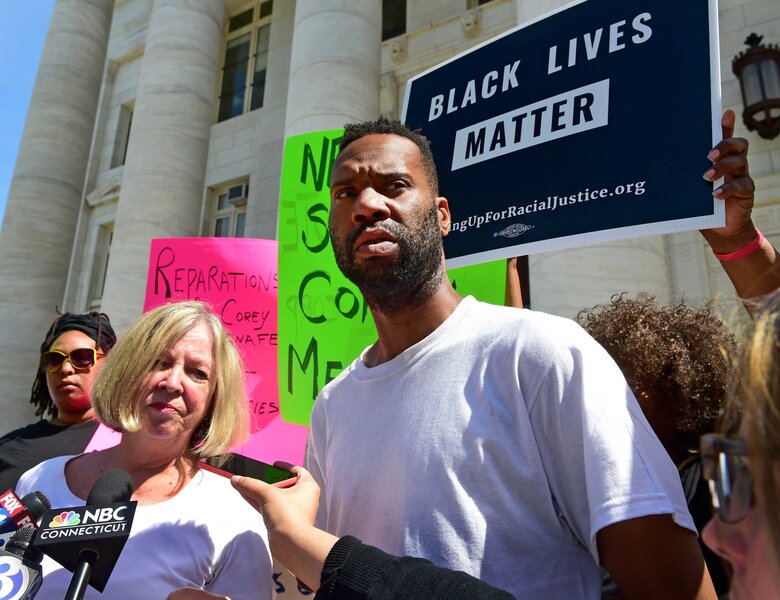For the second time this year, Yale battles its history with slavery
Loading...
A former Yale University dining services worker facing criminal charges for destroying a stained-glass window depicting slaves in a cotton field said Tuesday that he should not have done it, but he found the image disturbing.
Corey Menafee, who is black, used a broomstick last month to break the window inside Calhoun College, which has been the target of student protests because it is named for former Vice President John C. Calhoun, an ardent 19th century defender of slavery.
Menafee, 38, appeared in court Tuesday charged with felony criminal mischief and misdemeanor reckless endangerment. He did not enter a plea. Afterward, he told reporters outside New Haven Superior Court that he was upset over the image in the window.
"You look up and there is an image of slaves," he said. "It's the 21st century; you shouldn't have to see that."
Yale says Menafee apologized and then resigned after breaking the window with a broom on June 13.
A spokesman said shards of glass fell onto a public street, endangering a woman walking there.
But the school issued a statement Tuesday saying it does not want to pursue his prosecution and is not seeking any restitution.
State prosecutors plan to meet with lawyers for the school and Menafee and will have the final say as to whether to pursue the criminal case.
The name of Calhoun College has been the subject of protests by students, faculty, alumni and others who want it changed.
Yale President Peter Salovey in April announced the college would continue to carry Calhoun's name but that two new residential colleges would be named for Benjamin Franklin and Pauli Murray, the co-founder of the National Organization for Women and a civil rights leader.
"Ours is a nation that continues to refuse to face its own history of slavery and racism," President Salovey said in a statement in April. "Erasing Calhoun's name from a much-beloved residential college risks masking this past, downplaying the lasting effects of slavery, and substituting a false and misleading narrative, albeit one that might allow us to feel complacent or, even, self-congratulatory. Retaining the name forces us to learn anew and confront one of the most disturbing aspects of Yale's and our nation's past. I believe this is our obligation as an educational institution."
Salovey also charged the school's Committee on Art in Public Spaces to assess all of the art on campus as part of a broader initiative to review the school's historical relationship with slavery, the school said Tuesday.
"After the window was broken in June, the committee recommended that it and some other windows be removed from Calhoun, conserved for future study and a possible contextual exhibition, and replaced temporarily with tinted glass," the school said in a statement. "An artist specializing in stained glass will be commissioned to design new windows, with input from the Yale community, including students, on what should replace them."
More than two dozen protesters gathered on the court steps Tuesday holding signs and chanting, "Justice for Corey Menafee."







